UHF receiver design based on MICRF009
MICRF009 is a single-chip SK/OOK (on-off key) RF receiver IC from Micrel Semiconductor. The performance of the device has been improved in two areas, namely higher sensitivity, 104dBm and faster recovery (usually up to 1ms). Similar to other QwikRadio products, the MICRF009 features low power operation and high integration.
First, MICRF009 characteristicsThe MICRF009 provides both fixed mode (FIX) and scan mode (SWP) modes of operation. In FIX mode, the device can be used as a conventional superheterodyne receiver, while in SWP mode, the device can scan a wider range of RF spectrum with a patented scanning function. The FIX mode has better selectivity and sensitivity performance, while the SWP mode allows the MICRF009 to work with low-cost, less accurate transmitters.
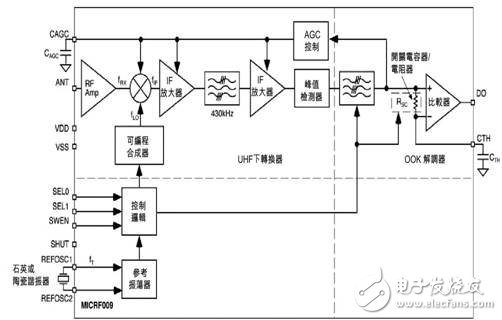
Figure 1. Block diagram of MICRF009
The MICRF009 provides all post-detection (demodulator) data filtering, eliminating the need for an external baseband filter. The user can select one of the two filter bandwidths externally, simply by setting the appropriate filter based on the data rate and code modulation format. The IC device operates between 300MHz and 440MHz, and the data transmission rate can be as high as 2Kbps (fixed mode, Manchester code), and the antenna RF repeating radiation is low.
As seen in Figure 1, the MICRF009 consists of three main components: a UHF down converter, an OOK demodulator, and a reference clock and control logic. It also contains two capacitors (CTH, CAGC) and a timing component such as a quartz crystal or ceramic resonator. In addition to the power coupling capacitors and the antenna impedance matching network, they are the only external components required to form a complete UHF receiver via the MICRF009. For best performance, the MICRF009 should be impedance matched to the antenna, and the matching network requires only two or three additional components.
Second, the design stepsDesigning a complete UHF receiver with MICRF009 requires five basic steps: selecting the operating mode (fixed mode and scan mode), selecting the reference oscillator, selecting the bandwidth of the demodulation filter, selecting the CTH capacitor, and the CAGC capacitor.
1, the first step: select the operating mode
(1) Fixed mode
In applications where the transmit frequency has been accurately set, such as transmitters using SAW or quartz crystal components, the MICRF009 can be configured as a standard superheterodyne receiver (fixed frequency). In fixed mode, the receiver is almost immune to interfering signals due to the narrow RF bandwidth. Connecting the SWEN pin to ground is a fixed mode.
(2) Scan mode
When connected to a low cost LC transmitter, the MICRF 009 should be configured in scan mode. In scan mode, the circuit topology is still superheterodyne, and the local oscillator (LO) sweeps through a band at a frequency greater than the data rate. This technique effectively increases the RF bandwidth of the MICRF009, allowing the device to be applied to significant frequency offsets between the transmitter and receiver.
(misalignment) environment, the transmission frequency can vary up to ±0.5%. In scan mode, approximately 1.5% of the band can be captured near the nominal transmit frequency. Even if the transmitter's frequency drift is as high as ±0.5%, there is no need to re-adjust the receiver or affect system performance.
The LO scanning technique does not affect the IF bandwidth, so its noise performance is not degraded relative to the fixed mode. Whether operating in fixed mode or scan mode, the IF bandwidth is 680kHz. Due to the limitations of the LO scanning process, the upper limit of the data rate in scan mode is approximately 1250 Hz. In superheterodyne receivers based on quartz crystals, the situation is not entirely constant, they can only be operated in transmitters based on SAW or quartz crystals.
In scan mode, when a strong interfering signal appears in the RF band during installation, spectrum reduction may occur because the process includes all signals in the scan range intact. In most applications, MICRF009 can be used to replace the super-regeneraTIve receiver.
2, the second step: select the reference oscillator
All timing and tuning operations of the MICRF009 are derived from the internal Colpitts reference oscillator. The specific timing and tuning are controlled by the REFOSC pin. The operation is selected from one of three methods:
·Connect a ceramic resonator
·Connect a quartz crystal
· Drive the pin through an external timing signal
The dedicated reference frequency required is related to two factors, the system transmit frequency, and the operating mode of the receiver set by the SWEN pin.
(1) Selection of quartz crystal or ceramic resonator
Since the IC already contains capacitors, do not use resonators with full capacitors, and also pay special attention to ensure that low ESR quartz crystals are used.
If the IC is operating in fixed mode, it is recommended to use a crystal component. If you are working in scan mode, you can choose either a crystal component or a ceramic resonator. When using a quartz crystal or ceramic resonator, the minimum voltage is 300mVPP.
If an external signal is used, the signal should be AC ​​coupled and its operating voltage should be limited to 0.1VPP to 1.5VPP.
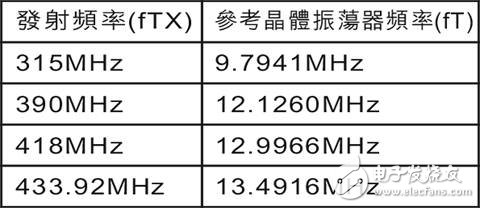
Table 1. Recommended reference crystal oscillator frequency for typical transmit frequency in fixed mode
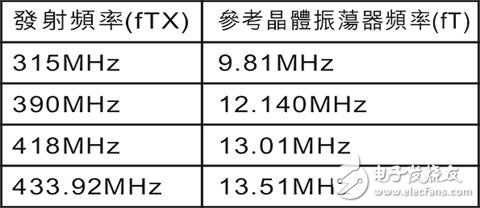
Table 2. Recommended reference crystal oscillator frequency for typical transmit frequency in scan mode
(2) Select the reference oscillator frequency fT (fixed mode)
For any superheterodyne receiver, the difference between the frequency fLO of the internal LO (local oscillator) and the incoming transmit frequency fTX should be equal to the IF center frequency. For a given fTX, fLO can be calculated by Equation 1:
fLO=fTX±0.86(fTX/315)┅┅┅ (1)
In the formula, the units of the frequencies fTX and fLO are MHz. Note that for any given fTX, fLO has two values, representing "high end mixing" and "low end mixing". The high-end mixing produces an image frequency above the corresponding frequency, and the low-end mixing produces an image frequency below the corresponding frequency.
Select two acceptable fLOs and use Equation 2 to calculate the reference oscillator frequency fT:
fT= 2&TImes;fLO/64.5â”…â”…â”…(2)
The frequency fT is in MHz. The REFOSC pin of the MICRF009 is connected to a quartz crystal with a frequency of fT, and the frequency is accurate to four decimal places. Table 1 shows the fT values ​​for some common transmit frequencies when MICRF009 is operating in fixed mode.
(3) Select REFOSC frequency fT (scan mode)
It is much simpler to select the reference oscillator frequency fT in scan mode than in fixed mode. At the same time, the accuracy requirements of the frequency reference components are also very flexible.
In scan mode, fT is given by Equation 3:
fT=2&TImes;fTX/64.25â”…â”…â”…(3)
In scan mode, a frequency component with a precision of two decimal places is sufficient. In some cases, if the transmission frequency is particularly inaccurate, a crystal component must be used.
3. Step 3: Select CTH capacitor
In order to achieve the logic level data limiting purpose, the DC value of the demodulated signal needs to be compressed by the external filter capacitor CTH and the resistance RSC of the on-chip switching capacitor, with specific reference to the MICRF009 block diagram.
The first step in selecting capacitor CTH is to select the data slice level time constant, depending on some system issues, including system decoding response time, data encoding structure, and so on.
At a frequency of 315MHz, the effective resistance of the RSC is 145kΩ, which can be linearly scaled according to the frequency. At other frequencies, the power supply impedance of the CTH pin is given by Equation 4, where fT is in MHz:
RSC=145Ω&TImes;9.7940/fT┅┅┅(4)
It is recommended that τ be 5 times the code rate. The effective impedance of the RSC is 145kΩ at 315MHz, which is inversely proportional to the frequency. At other frequencies, the power supply impedance of the CTH pin is given by Equation 5, where fT is in MHz:
CTH =Ï„/RSCâ”…â”…â”…â”…(5)
It can be seen that a ±20% standard X7R ceramic capacitor is sufficient.
4. Step 4: Select CAGC capacitors
Signal paths with AGC increase the dynamic range of the input. The rise time constant of the AGC signal is externally set by the capacity value of the CAGC capacitor connected to the CAGC pin of the MICRF009. In order to maximize the system range, the ripple of the AGC control voltage must be minimized. Once the control voltage reaches a static value, the ripple of the AGC control voltage is preferably less than 10 mVPP. Therefore, it is recommended that the capacitance of the capacitor be greater than 0.47μF.
Careful on-chip AGC control voltage management will allow MICRF009 to operate in a duty cycle mode. When the device is placed in power down mode (the SHUT pin is high), the AGC capacitor is charged to maintain a certain voltage. When the operation is resumed, only the voltage drop due to capacitor leakage needs to be replenished. When the device is operated with a certain duty cycle, it is recommended to use a capacitor with less leakage.
To further improve duty cycle operation, the AGC pull-up current and pull-down current must be placed immediately after the device is removed from the power-down state for approximately 10 ms. This compromises the voltage drop of the AGC capacitor, reducing the time required to recover the correct AGC voltage. Among them, the current amplification factor is 45.
(1) Select CAGC capacitors in continuous mode
In general, the recommended capacity for CAGC capacitors is 0.47μF to 4.7μF. Note that if the capacitor is too large, the AGC's response to the input signal can be very slow. The quiet time of the AGC (to reach the fully discharged state, ie 0V voltage) can be obtained by Equation 6:
Δt=1.333×CAGC-0.44┅┅(6)
Among them, the unit of CAGC is μF, and the unit of Δt is seconds.
(2) Select CAGC capacitor in duty cycle mode
In the power-off state, when the IC is activated, the voltage drop of the CAGC capacitor should be replenished as soon as possible. As mentioned above, MICRF009 will pull up or pull down the current by a factor of 45 after startup. This fixed period of time is based on the reference oscillator frequency fT. When fT = 6.00 MHz, the time is 10.9 ms and is inversely proportional to fT. Choosing the appropriate CAGC capacitor value and the length of the power-off time will allow the voltage drop to be replenished within 10ms.
However, the polarity of the voltage drop is unknown, meaning that the AGC voltage can rise or fall. The worst case is the voltage drop at the recovery point because the AGC pull-up current is only 1/10 of the pull-down current. The specific magnitude of the voltage drop can be calculated according to Equation 7:
I/CAGC=ΔV/Δt┅┅┅(7)
Where I is the initial 10ms (67.5μA) AGC pull-up current, CAGC is the capacitance of the AGC capacitor, Δt is the buck recovery time, and ΔV is the voltage drop.
For example, if the user wants a buck recovery time of 10ms and a CAGC capacitor with a capacitance of 4.7μF is selected, the allowable voltage drop is approximately 144mV.

Figure 2. CTH pin interface circuit

Table 3.343.92MHz demodulator filter bandwidth and SEL0 relationship
5. Step 5: Select the bandwidth of the demodulator filter
The input pin SEL0 controls the bandwidth of the demodulator filter in a binary step, that is, the scanning mode is 625 Hz to 1250 Hz, and the fixed mode is 1250 Hz to 2500 Hz, as shown in Table 3. By default, SEL1 is connected to VSS. Note that the values ​​in Table 1 are theoretical values. The bandwidth of the filter is proportional to the frequency, so its specific value depends on the operating frequency.
(1) Power supply bypass capacitor
Power supply bypass capacitors are highly recommended. This capacitor should be connected between VDDBB and VDDRF and its leads should be as short as possible. For best results, connect the VSSRF of the power supply to VSSBB and connect VDDBB to VDDRF (that is, the bandpass current should flow through the RF return path).
(2) Improve selectivity by optimizing the bandpass filter
In a noisy local environment, a fixed bandpass network can be connected between the ANT pin and the VSSRF pin to provide additional receiver selectivity and input overload protection. The minimum input configuration is shown in Figure 9. This design provides some filtering and the necessary overload protection.
(3) Data suppression
During quiescence (no signal), the output data (DO pin) randomly mutates with the size of the noise. Most decoders can distinguish between random noise and actual data. For some systems, this is not a problem. There are three ways to reduce the output noise:
· Increase the threshold of the demodulator by analog suppression
· Turn off output by digital suppression when there is no data
· Filter the high frequency noise clutter signal of the data output pin through the output filter
The simplest solution is to take a trade-off to add some analog suppression, or voltage suppression, to the CTH pin so that the noise does not trigger the internal comparator.
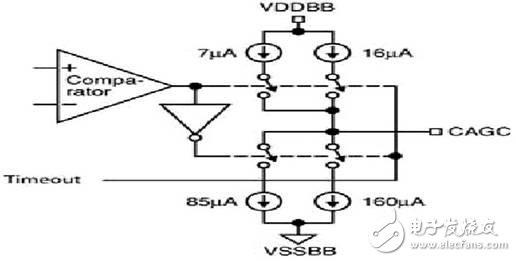
Figure 3. CAGC pin interface circuit
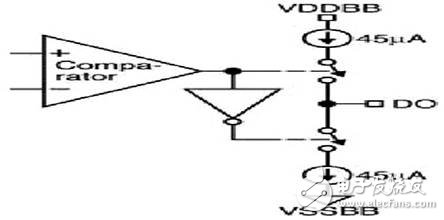
Figure 4. DO pin interface circuit
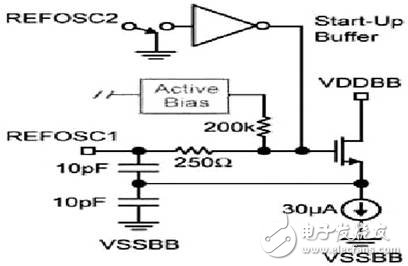
Figure 5. REFOSC pin interface circuit
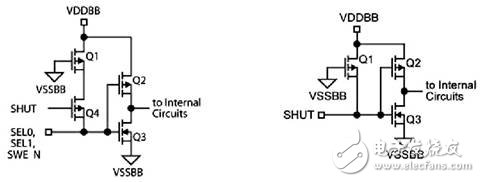
Figure 6. SEL0/SEL1/SWEN pin (6a), and SHUT pin (Figure 6b) interface circuit
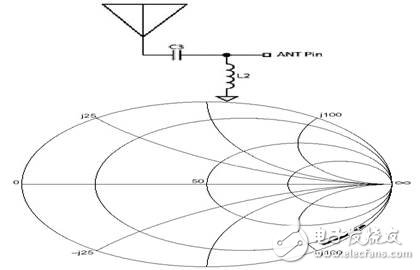
Figure 7. Antenna input impedance matching IC input impedance
In general, 20mV to 30mV is sufficient. This can be achieved by connecting a mega-ohm resistor between the CTH pin and the VSSBB or VDDBB pin. The specific value depends on the required offset polarity. Since the receiver AGC noise of the MICRF009 at the output of the internal comparator is always the same (set by the AGC), the deviation suppression requirement will also change as the noise intensity changes. Introducing inhibition will reduce selectivity and will also reduce the range of choice. Therefore, only introducing a certain amount of deviation is enough to keep the output quiet. Typical suppression resistors range from 10M to 6.8M ohms.
6, I / O pin interface circuit
For the different I/O pins of MICRF009, the interface circuit is shown in Figure 2-8. For the sake of brevity, all input and output pins in the figure are not labeled with an ESD protection circuit.
7, antenna impedance matching
The matching of the antenna input impedance to the IC input impedance is very important. As shown in Figures 7 and 4, the input impedance of the antenna is frequency dependent. The ANT pin can be matched to 50 ohms by the L-shaped current shown in Figure 3. That is, a shunt inductor is connected between the antenna input and ground, and another component is connected in series between the input of the antenna and the ANT pin.
Among them, the value of the inductor is shown in Table 4, depending on the PCB material, PCB thickness, grounding configuration, and the length of the wiring path. The specific conditions of the data in the table are: PCB thickness 0.031 〃, the board is FR4, the rigid board, the bottom layer is grounded, and the wiring path is short. Among them, the inductors are wire-wound 0063 or 0805 surface mount inductors from MuRata and Coilcraft. Of course, any brand of high SRF (self-excited frequency) wirewound inductors can be used.
Third, application examplesFigure 8 shows a typical application of the MICRF009 UHF receiver IC, which operates continuously in scan mode with a typical operating frequency of 315 MHz and can be customized by selecting the appropriate frequency reference (Y1) and adjusting the length of the antenna. If an alternative input filter is used, the capacitance of C4 will also change. If the data rate changes by 1 kbps, the resistance of R1 must also change. The bill of materials in Figure 8 is shown in Table 5. Figure 9 is the corresponding PCB layout.
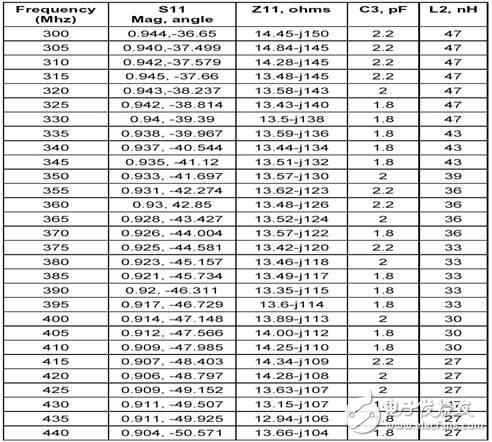
Table 4. Technical parameters of the shunt inductor for matching
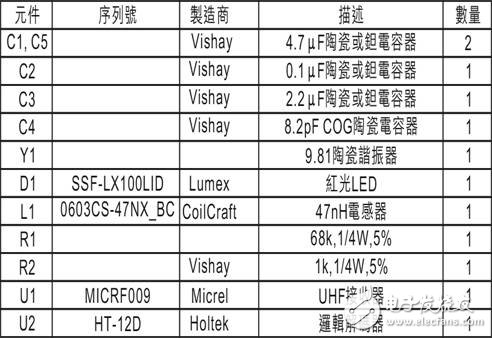
Table 5. Bill of materials for the application example
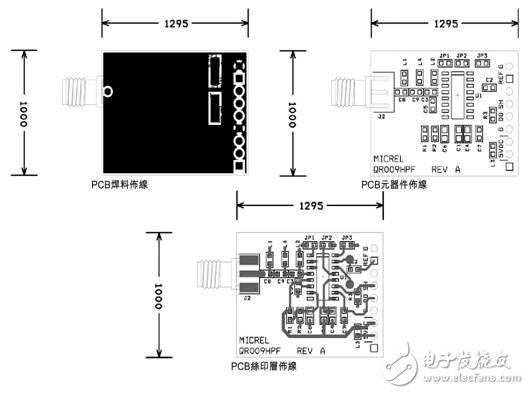
Figure 9. Minimum input configuration to improve selectivity by optimizing the bandpass filter
Commercial Electric Fan,Small Electric Fan,Standard Electric Fan,Electrical Fan
Foshan Shunde Josintech Electrical Appliance Technology Co.,Ltd , https://www.josintech.com